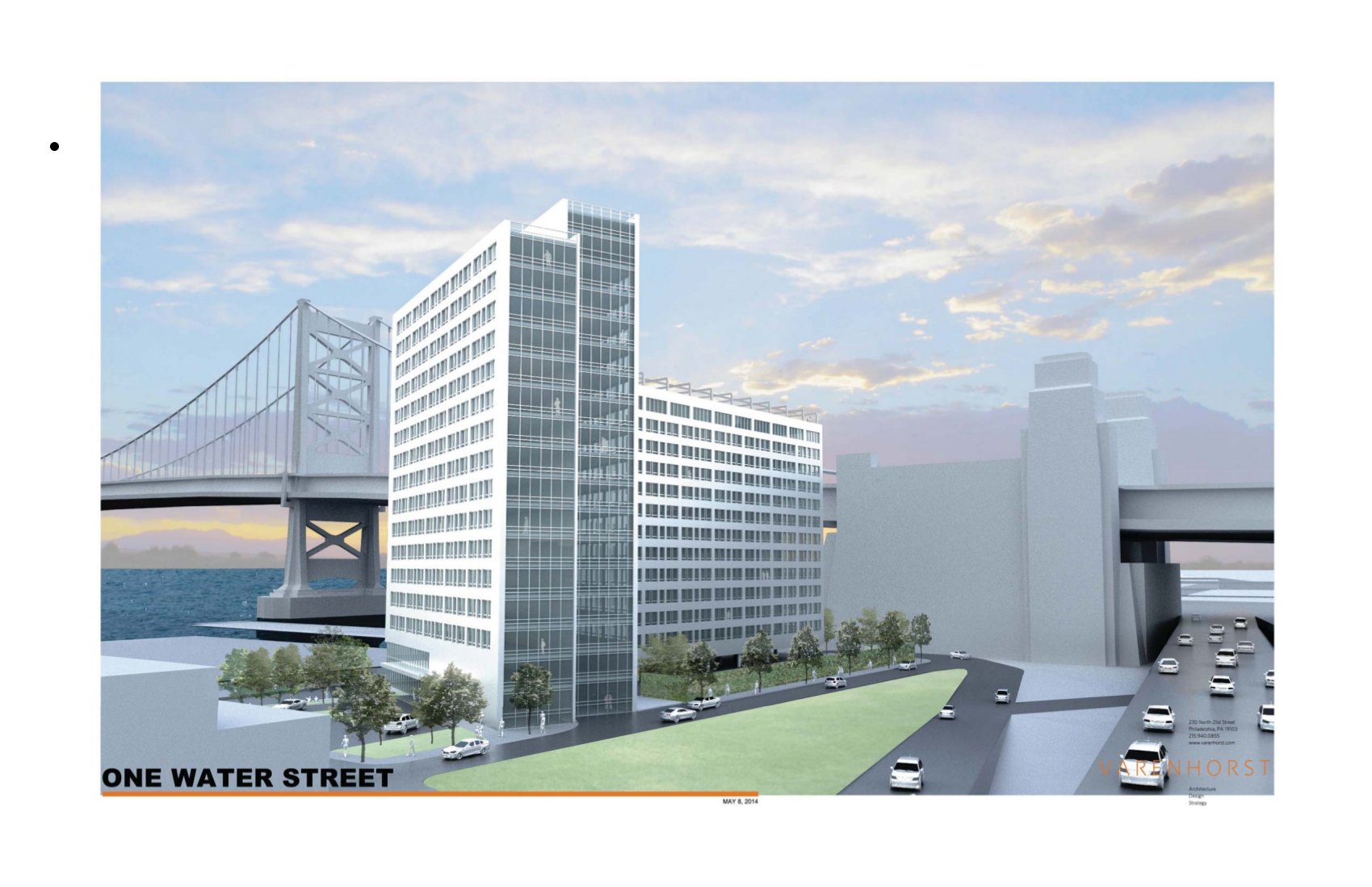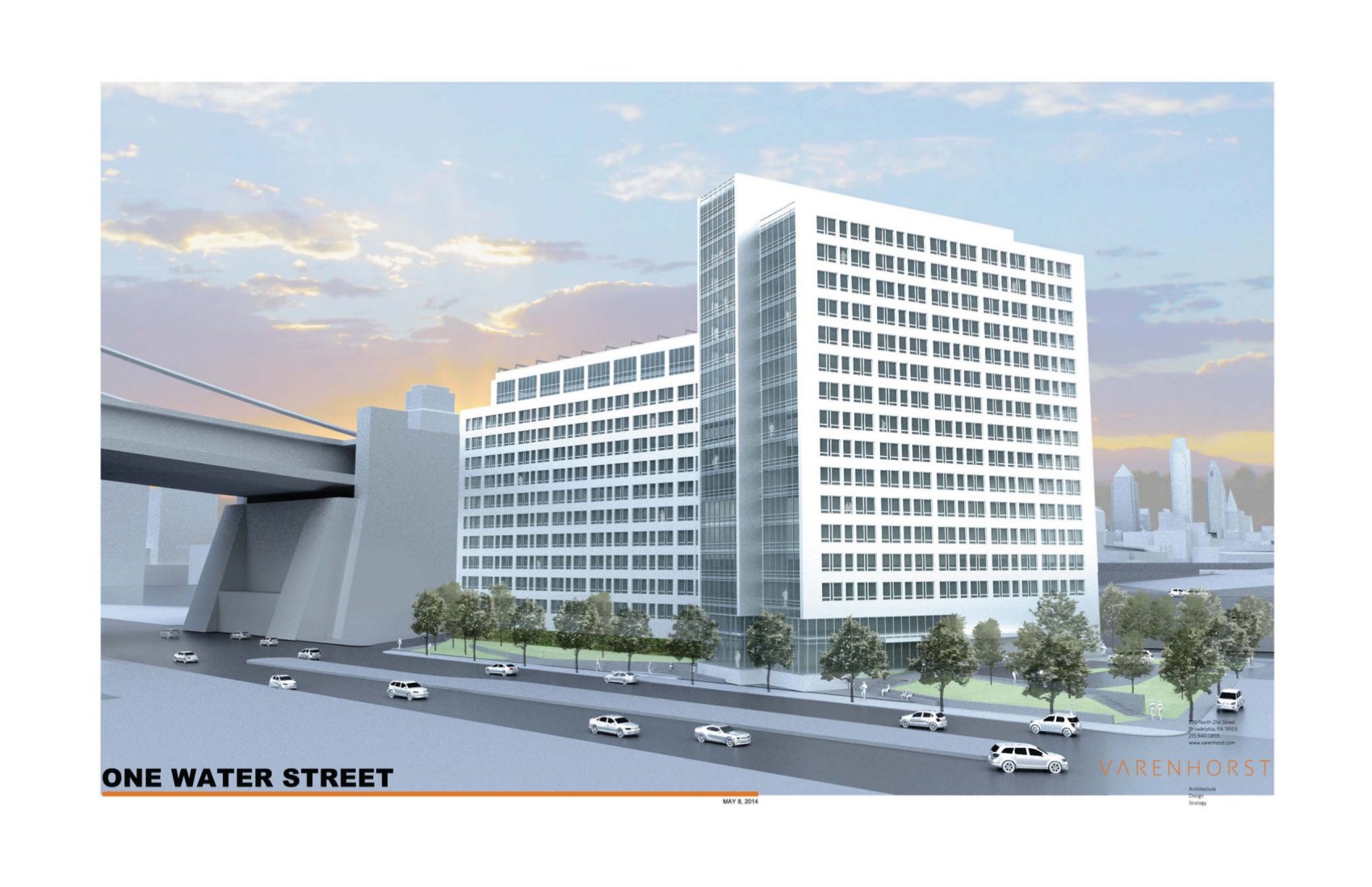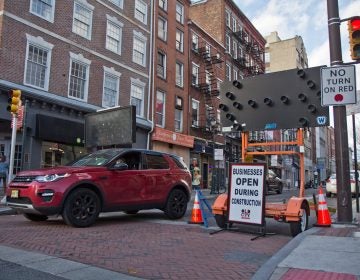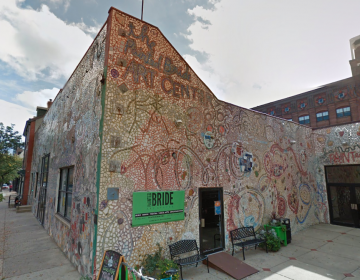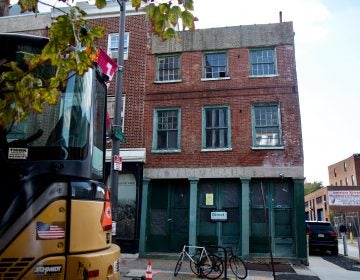250 apartments planned for site near Ben Franklin Bridge
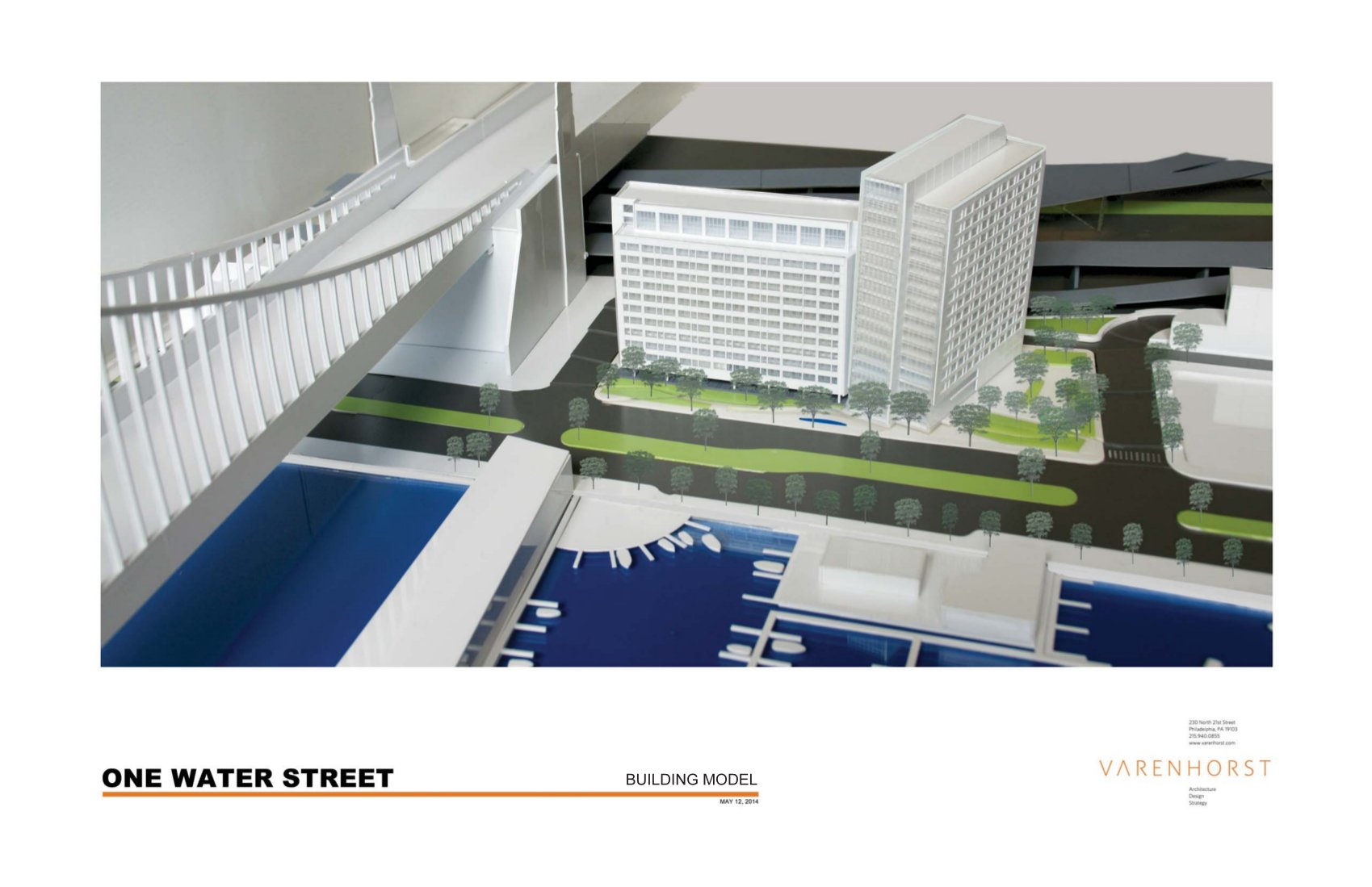
A group of waterfront advocates say the by-right proposal proves the Central Delaware Overlay and base zoning are not too restrictive
PMC Property Group hopes to break ground on a 250-unit apartment building at 230 N. Columbus Blvd. – near the Ben Franklin Bridge – this July.
The $65 million project, called 1 Water Street, is being designed by Varenhorst. Plans currently call for 166 one-bedroom and 84 two-bedroom apartments, although PMC Executive Vice President Jonathan Stavin said there is still discussion about including some three-bedroom units in the mix as well.
Materials selection is not complete, but there will be “a significant amount of glass and metal,” Stavin said. A panel system similar to the PMC project at 1900 Arch Street will be used on the 170-foot structure, he said.
The 1 Water Street grounds will include two public green spaces, designed by landscape architect David Rubin at Land Collective. “We’ve chosen to set the vast majority of the building back 25 feet from the sidewalk,” Stavin said. “We’re going to have the effect of a promenade along Columbus Boulevard. It will not just be a sidewalk, but a green space with a water feature and built in benches.” The setback will accommodate a series of 18-inch retaining walls that will be used to raise the building above the floodplain, he said.
Together, the two public spaces will total about 11,600 square feet, or 20 percent of the site. The second, larger space will be located at the corner of Columbus and Vine. Stavin said he doesn’t have many details on this spot yet, but will when the project goes before the Philadelphia City Planning Commission’s Civic Design Review Committee on May 27.
A green roof is planned for the project, for which PMC will seek LEED certification. It includes 73 parking spaces, and will “probably” include car-share spots. There will be a bicycle storage room, gym, and meeting space for building residents.
Ten percent of the 250 apartments – 25 of them – will be reserved for lower-income residents. The rents will be lower for those apartments, Stavin said, but he doesn’t yet know how much rent will for any of the apartments.
Stavin said his company has reserved units for lower-income residents at a Pittsburgh project, and it proved “very successful.”
On Water Street and Columbus, PMC is offering the larger-than-required public spaces and mixed-income component of the project in exchange for height bonuses. The project is within the Central Delaware Overlay district, which limits height to 100 feet unless developers provide one or more of the public benefits listed in the legislation.
For those who follow waterfront development, the 230 N. Columbus address may sound familiar. It was formerly the proposed location of Marina View Tower, a project for which Louis Cicalese’s Ensemble Real Estate received needed approvals at least twice, but never built. PMC bought the property in January – the $65 million price tag includes that purchase as well as construction costs, Stavin said.
There were several versions of Marina View. In 2006, Cicalese planned a 30-story tower with nearly 200 condos, but then the condo market faltered. In 2012, Cicalese and Ensemble proposed 180 apartments in an 11-story plan approved by planning commissioners under the former Plan of Development process required by the interim version of the Central Delaware Overlay – a collection of zoning rules put in place to shape development according to the city’s long-range goals for the Central Delaware waterfront..
The plan morphed a bit during the process, but especially at first, it had its critics on and off the commission. They wanted more active space on the ground floor. They thought the building’s massing and height combined lessened views of the Ben Franklin Bridge. And they thought the original ratio of one parking spot per unit was too much parking. Critics weren’t especially bothered by the 120 foot height, even though it exceeded the 100 foot cap called for in the Master Plan for the Central Delaware. They were unhappy that the PCPC approved the plan without, in their opinion, requiring much in trade from the developer. That led to a push for the detailed matrix of public benefits and height bonuses that are part of the current Central Delaware Overlay.
“A lot of people not happy with (the previous proposal),” Stavin noted. “We made a lot of adjustments to take into account the concerns community had at that time.”
This includes pulling the massing of the building away from the bridge. “You can still see the bridge from Columbus Boulevard and I-95,” he said. “We’re not blocking out the buttresses.”
This decision preserves views the community was concerned about, Stavin said, but he said it’s also better for his project.
“The bridge is absolutely massive,” he said. “Anything right up against the bridge is going to look small and insignificant. Pulling the massing away, we were better able to balance the building and the bridge, so they better complement each other.”
One group of critics was the Central Delaware Advocacy Group, a collection of representatives from river-community civic associations and other organizations that advocate for the Central Delaware Master Plan and related zoning overlay.
CDAG was more pleased with Marina View’s final plan, which the PCPC approved in late 2012. It called for more units (206), fewer parking spaces (178), and more glass and active uses on the ground level.
But CDAG is much more enthusiastic about 1 Water Street, said Vice Chairman Joe Schiavo. The advocacy group is a Registered Community Organization and heard about the plans, as such, during their recent meeting.
Schiavo noted other PMC projects under construction. “One of the big differences between (PMC) and the former property owner is that these folks seem to build things,” he said.
CDAG has also embraced 1 Water Street as its poster project for development-by-right under the permanent version of the Central Delaware Zoning Overlay and the underlying zoning, CMX-4.
“They are meeting and exceeding the open space requirements. It is taller than 100 feet, but they are using two formulas to get themselves a height bonus,” Schiavo noted.
He said the building may be taller than what some would prefer, but it does not exceed the density ratio allowed by CMX-4. “It’s not an overbuild.”
Schiavo also believes the amount of parking proposed by 1 Water Street is much more reasonable than the amount Marina View planned for.
The proposal presents as two structures, and it’s the taller, 16-story one that’s about 170 feet, Schiavo said. About half of the parking is beneath the 13-story building, half is exposed to the sky, but screened so that it’s not visible from the street, he said.
They like the “apron of space” along Columbus. It’s a terraced space, with paths and seating open to the public. It was designed to handle a berm needed to boost the project above the flood plane, and it manages the flood plane problem better than Marina View did, Schiavo said. In the first of its 2012 versions, Marina View placed a wall along the Delaware Avenue sidewalk. Neither CDAG nor neighbors, Planning Commissioners nor the Delaware River Waterfront Corporation, which manages city-owned waterfront land and is overseeing redevelopment along the entire six miles, liked that wall. It was replaced with a grass berm with stairs, but Schiavo said the berm still wasn’t usable space, and had no purpose but to hide the wall. “This is a better solution.”
CDAG will be sending a letter of support for the project to Civic Design Review, Schiavo said, and will be using the letter to highlight the possibilities for by-right development under waterfront zoning. “The conclusion we came to is that you can actually build in the area of the Central Delaware given the current zoning code and overlay and build a project that requires no variances,” Schiavo said. “This project proves the current zoning overlay and current code work.”
Stavin said designing a project under waterfront zoning was not difficult. “We found that the overlay made a lot of sense given some of the constraints you would have with foundations near the river,” he said. “The height (cap) seemed more than adequate to get the density we needed to make development feasible” since there are several bonus plans available. “We were able to achieve everything we needed to achieve.”
Stavin said his company doesn’t generally do waterfront development, but this parcel was attractive because of its proximity to Old City and “a combination of improvements made by the city of Philadelphia – the Race Street Pier, the pedestrian walkway down Race Street – and the success of private developments such as Morgan’s Pier and the new FringeArts building.”
These things made PMC “feel like (the site) has the ability to be integrated into the city,” Stavin said. He noted the location on the west side of the avenue also helps with that city connection.
Apartments will be available about 18 months after construction begins, Stavin said.
WHYY is your source for fact-based, in-depth journalism and information. As a nonprofit organization, we rely on financial support from readers like you. Please give today.



